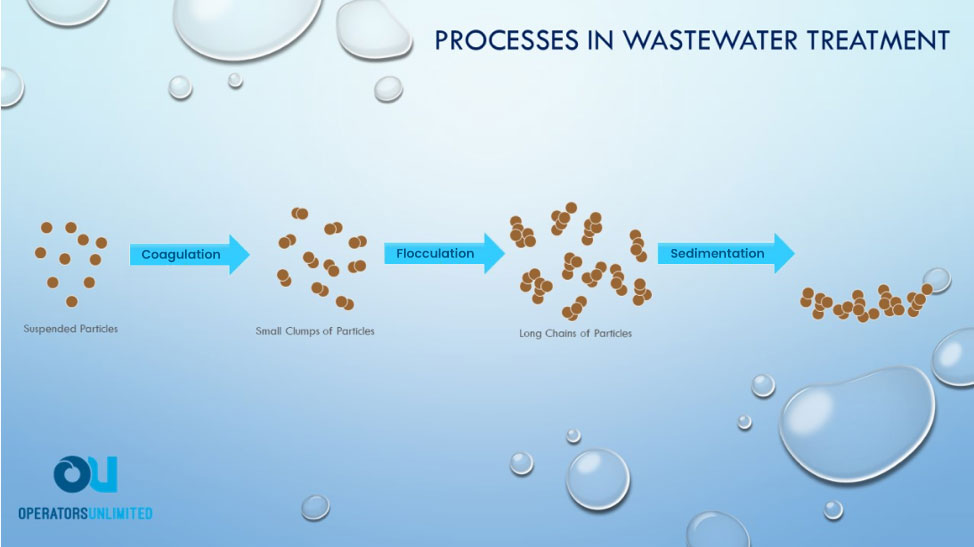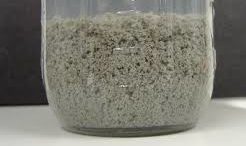Flocculation is a successive step to coagulation (see previous post) in the removal of suspended particles from wastewater. This process introduces chemical products, called flocculants, to help the clumps of smaller particles formed by the coagulants, form larger and longer chains of particles. As these chains become larger, they become more visible. In addition to the flocculants, more coagulant aides (like polymers) may need to be used. A mixer will often still be needed in this process but used more gently to prevent the breaking of the particle chains. The goal is to continue to help the particles collide and bond, forming what are sometimes referred to as Macroflocs, which are large enough to begin settling out of the water. Sedimentation, begins when the floc has reached optimal strength and mass and begins to settle out of the water forming sludge. Once the sludge has formed it can then periodically be removed. There are many different methods used for sludge removal. Operators Unlimited provides coagulants, flocculants, and many more products and services to assist in your wastewater treatment operation. In most instances a custom blend product is needed based on the content of your plant’s wastewater. One of our specialists can perform a jar test or other testing method to determine a tailored solution to your wastewater challenges. We can also help with your biological treatment issues as well. Contact us today.



